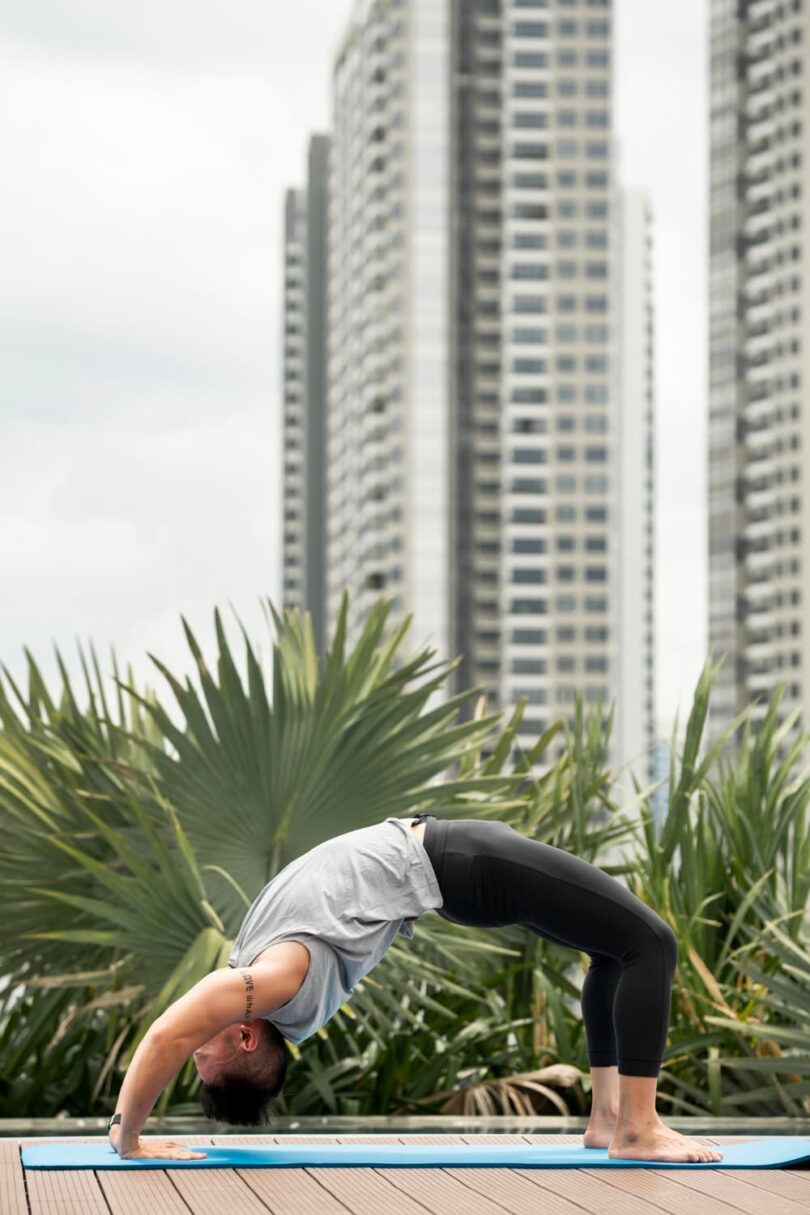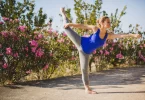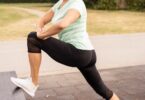Table of Contents
Introduction
Starting a yoga journey can feel both exciting and daunting. Yoga, an ancient practice that combines physical postures, breathing exercises, and meditation, offers numerous benefits for the mind and body. For beginners, it’s essential to begin with basic yoga poses that are easy to follow and help build a strong foundation. This article will guide you through the best yoga poses for beginners, how to prepare for your first session, tips for a successful practice, and more. Let’s get started!
Preparing for Your First Yoga Session
Choosing the Right Yoga Mat
When starting your yoga practice, one of the first things you’ll need is a good yoga mat. The right mat provides comfort and stability, which is crucial for beginners. Look for a mat that has good grip and cushioning. A thickness of around 4-6 mm is ideal for most beginners, offering enough support without being too hard or too soft.
What to Wear for Yoga
Wearing the right clothes can make a big difference in your practice. Opt for comfortable, stretchy clothing that allows you to move freely. Avoid anything too loose or too tight. Breathable fabrics are a great choice as they help you stay cool during your practice.
Creating a Comfortable Space
Having a dedicated space for your yoga practice can help you stay consistent. Find a quiet, clutter-free area in your home where you can roll out your mat and relax. Make sure the space is well-ventilated and has enough room for you to move around comfortably.
Warm-Up Exercises Before Yoga
Before jumping into yoga poses, it’s important to do some warm-up exercises. Warming up helps prepare your muscles and joints, reducing the risk of injury. Simple stretches, joint rotations, and light cardio can get your body ready for yoga. Focus on loosening up your neck, shoulders, wrists, and legs.
Top 10 Yoga Poses for Beginners
Mountain Pose (Tadasana)
Description: Mountain Pose is a simple yet powerful pose that helps improve posture and balance. It forms the foundation for all standing poses.
Steps to Perform:
- Stand tall with your feet together.
- Distribute your weight evenly on both feet.
- Engage your thighs and lift your kneecaps.
- Lengthen your spine and lift your chest.
- Relax your shoulders and extend your arms alongside your body.
Benefits: Mountain Pose helps improve posture, balance, and concentration. It also strengthens the legs and core muscles.
Downward Facing Dog (Adho Mukha Svanasana)
Description: Downward Facing Dog is a fundamental yoga pose that stretches the entire body. It’s often used as a transitional pose in many yoga sequences.
Steps to Perform:
- Start on your hands and knees.
- Spread your fingers wide and press firmly into the mat.
- Tuck your toes under and lift your hips towards the ceiling.
- Straighten your legs and push your heels towards the floor.
- Keep your head between your arms and gaze towards your navel.
Benefits: This pose stretches the hamstrings, calves, and spine. It also strengthens the arms and shoulders, improves digestion, and relieves stress.
Child’s Pose (Balasana)
Description: Child’s Pose is a restful pose that helps to calm the mind and relieve tension in the body.
Steps to Perform:
- Kneel on the floor with your big toes touching and knees wide apart.
- Sit back on your heels.
- Extend your arms forward and rest your forehead on the mat.
- Breathe deeply and relax your body.
Benefits: Child’s Pose gently stretches the hips, thighs, and ankles. It also helps reduce stress and fatigue, making it a perfect resting pose during your practice.
Tips for a Successful Yoga Practice
Listening to Your Body
In yoga, it’s crucial to listen to your body. Don’t push yourself too hard; yoga is about finding your own balance and comfort. If a pose doesn’t feel right, it’s okay to modify it or take a break. Your body knows best, so pay attention to its signals. This mindfulness can help you avoid injuries and make your practice more enjoyable.
Breathing Techniques
Breathing is a cornerstone of yoga practice. Deep, controlled breaths can significantly impact your experience. Focus on your breath, making sure each inhale and exhale is steady and calm. This not only helps with concentration but also increases oxygen flow to your muscles, enhancing relaxation and performance.
Staying Consistent
Consistency is key when it comes to yoga. Regular practice, even if it’s just for a few minutes each day, can lead to significant improvements in flexibility, strength, and mental clarity. Set a routine that fits into your schedule and stick to it. Over time, you’ll see the benefits of a consistent practice.
Using Props and Modifications
Yoga props like blocks, straps, and bolsters are great for beginners. They help you achieve proper alignment and make poses more accessible. Don’t hesitate to use them. Modifications are also helpful. If a pose is too challenging, try a simpler version. This way, you can gradually build your strength and flexibility without risking injury.
Creating a Yoga Routine for Beginners
Starting with a Simple Routine
For beginners, it’s best to start with a simple routine. Begin with foundational poses such as Mountain Pose, Downward Facing Dog, and Child’s Pose. These poses are easy to learn and provide a good base for more advanced postures.
Gradually Increasing Duration and Intensity
As you get comfortable with your routine, start to increase the duration and intensity of your practice. You can add new poses, hold them longer, or try more challenging variations. This gradual progression helps you build strength and flexibility at a steady pace.
Integrating Yoga into Daily Life
Try to integrate yoga into your daily routine. Find a time that works best for you, whether it’s a morning stretch, a mid-day break, or a relaxing evening session. Making yoga a regular part of your day helps reinforce the habit and brings its benefits into your everyday life.
Resources for Further Learning
Recommended Books on Yoga for Beginners
Books can be a valuable resource for learning more about yoga. Look for ones that offer detailed instructions, illustrations, and tips for beginners. A good book can guide you through the poses and help deepen your understanding of yoga.
Online Yoga Classes and Tutorials
Online classes and tutorials are a convenient way to practice yoga from home. Many websites offer free or affordable classes for beginners. Websites like Yoga Journal have a wealth of resources and pose guides to help you get started.
Yoga Apps for Beginners
Yoga apps are another great resource. They often include video tutorials, pose libraries, and customizable routines. Apps like Down Dog and Yoga for Beginners are user-friendly and perfect for starting your yoga journey.
Creating a Yoga Routine for Beginners
Starting with a Simple Routine
Building a yoga routine doesn’t have to be complicated. Begin with basic poses that are easy to remember and perform. Start your routine with foundational poses such as Mountain Pose, Downward Facing Dog, and Child’s Pose. These poses are simple yet effective, providing a solid base for your practice. As you become more familiar with them, your confidence and skill will grow, making it easier to try new poses.
Gradually Increasing Duration and Intensity
As you get comfortable with your initial routine, it’s important to gradually increase the duration and intensity of your practice. Begin by holding each pose for a few breaths, then slowly extend the time as you build strength and flexibility. Introduce new poses one at a time, giving yourself ample opportunity to learn and perfect each one before moving on to the next. This steady progression helps prevent injuries and ensures a sustainable yoga practice.
Integrating Yoga into Daily Life
To get the most out of your yoga practice, try to integrate it into your daily routine. Find a time that fits naturally into your schedule, whether it’s a morning stretch to wake up your body or an evening session to wind down. Consistency is key, so choose a time when you’re likely to stick with it. Incorporating yoga into your daily life doesn’t mean you need to spend hours on the mat; even a short 15-minute session can have significant benefits.
Here are some tips for integrating yoga into your day:
- Morning Practice: Start your day with a few gentle stretches and breathing exercises to wake up your body and mind.
- Mid-Day Break: Take a break from work or chores with a quick yoga session to re-energize and refocus.
- Evening Routine: Wind down in the evening with relaxing poses that help you let go of the day’s stress and prepare for a good night’s sleep.
Resources for Further Learning
Recommended Books on Yoga for Beginners
Books can provide valuable guidance and inspiration as you develop your yoga practice. Look for beginner-friendly titles that offer clear instructions and illustrations. Some recommended books include:
- Yoga for Everyone by Dianne Bondy
- The Yoga Bible by Christina Brown
Online Yoga Classes and Tutorials
Online classes and tutorials are a fantastic resource for beginners. Websites like Yoga Journal and Verywell Fit offer a variety of classes that you can follow at your own pace. These classes often include modifications for different skill levels, making it easy to find something that suits your needs.
Yoga Apps for Beginners
Yoga apps are another great tool for building a routine. Apps like Down Dog and Yoga for Beginners provide guided sessions that you can do anywhere, anytime. These apps often feature customizable routines, so you can choose the length and difficulty level that works best for you.
Frequently Asked Questions
What is the Best Time to Practice Yoga?
The best time to practice yoga is whenever you can fit it into your schedule consistently. Many people enjoy morning yoga to start the day with a fresh and energized mind, while others prefer evening sessions to unwind and relax. Ultimately, the best time is when you feel most comfortable and can commit regularly.
How Often Should Beginners Practice Yoga?
For beginners, practicing yoga 2-3 times a week is a great start. This frequency allows your body to get accustomed to the movements and build a foundation. As you become more comfortable and confident, you can gradually increase the frequency to daily practice if it suits your lifestyle.
Can Yoga Help with Weight Loss?
Yes, yoga can aid in weight loss by increasing muscle tone, boosting metabolism, and reducing stress levels, which often contribute to weight gain. Combining yoga with a balanced diet and regular physical activity can lead to effective and sustainable weight loss.
Do I Need to be Flexible to Start Yoga?
No, you don’t need to be flexible to start yoga. In fact, yoga is a practice that helps you improve your flexibility over time. It’s about meeting your body where it is and working within your limits. With consistent practice, you’ll notice gradual improvements in your flexibility.
What Should I Eat Before and After Yoga?
It’s best to practice yoga on an empty stomach or after a light meal. Wait at least 2-3 hours after a heavy meal before doing yoga. After your practice, choose a healthy snack or meal to replenish your energy. Fresh fruits, vegetables, and protein-rich foods are great options to help your body recover.
Is Yoga Safe for Everyone?
Yoga is generally safe for most people, but it’s always a good idea to consult with your healthcare provider before starting any new exercise program, especially if you have any pre-existing conditions or concerns. Listening to your body and practicing within your limits is crucial for avoiding injuries.
Can I Do Yoga at Home?
Absolutely! Many people practice yoga at home. With the abundance of online classes, tutorials, and yoga apps available, you can easily follow along with guided sessions from the comfort of your home. Just make sure you have a quiet space and a good yoga mat.
Conclusion
Starting yoga as a beginner can be a rewarding and life-changing experience. By practicing the basic poses, you lay a strong foundation for a healthier and more balanced lifestyle. Remember, the journey of yoga is personal and unique to everyone, so take your time, be patient with yourself, and enjoy the process.
Listening to your body is crucial. It’s okay to take breaks and modify poses as needed. The goal is to improve gradually, not to achieve perfection right away. Consistency is key, so try to make yoga a regular part of your routine, whether it’s a morning stretch or an evening wind-down.
Incorporate props and modifications to make your practice more accessible and comfortable. Use resources like books, online classes, and apps to guide you and provide additional support. Don’t hesitate to reach out to a yoga instructor if you have questions or need personalized advice.
Yoga is not just about physical exercise; it’s also about finding peace and balance in your life. Embrace the practice, and let it help you grow both physically and mentally. With dedication and an open mind, you’ll soon notice the many benefits yoga brings to your daily life.
Related Article With Pictures: Partner Yoga for Beginners: 7 Poses to Try with a Friend







